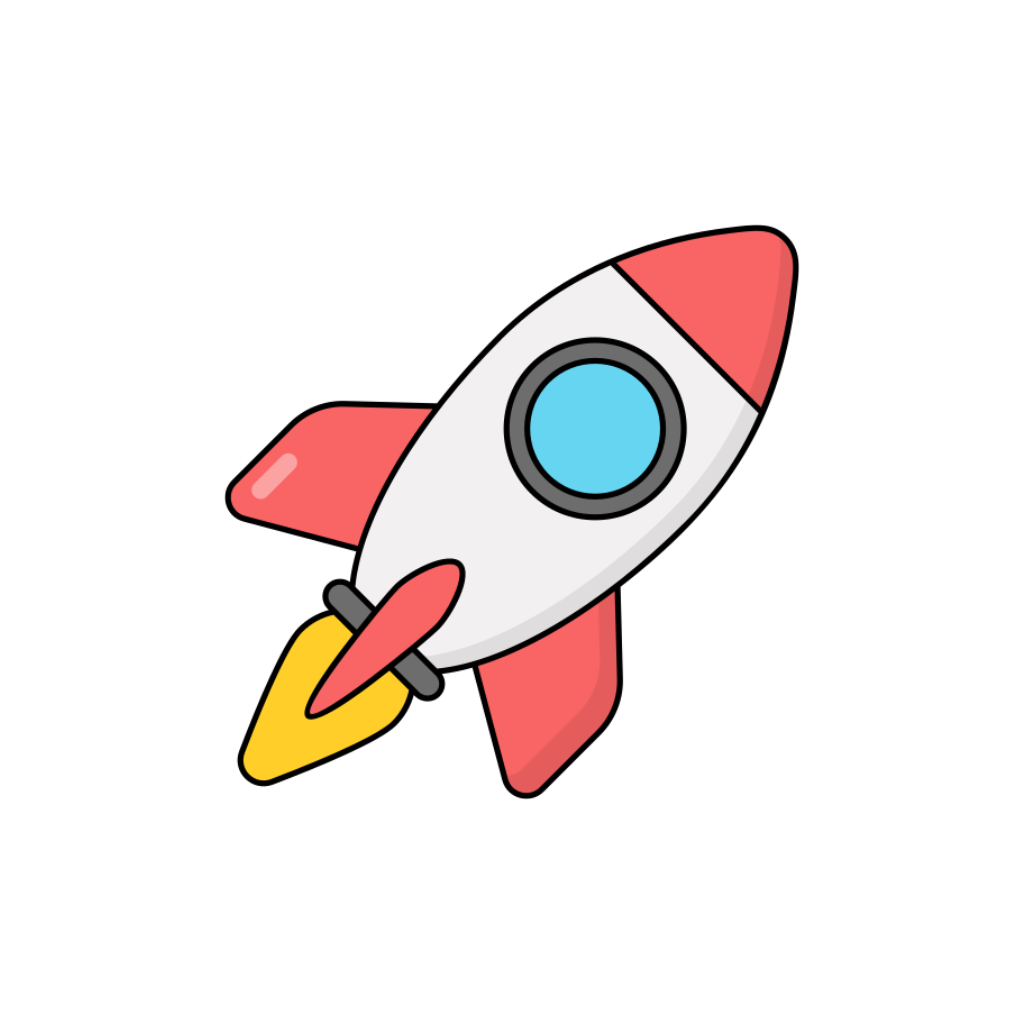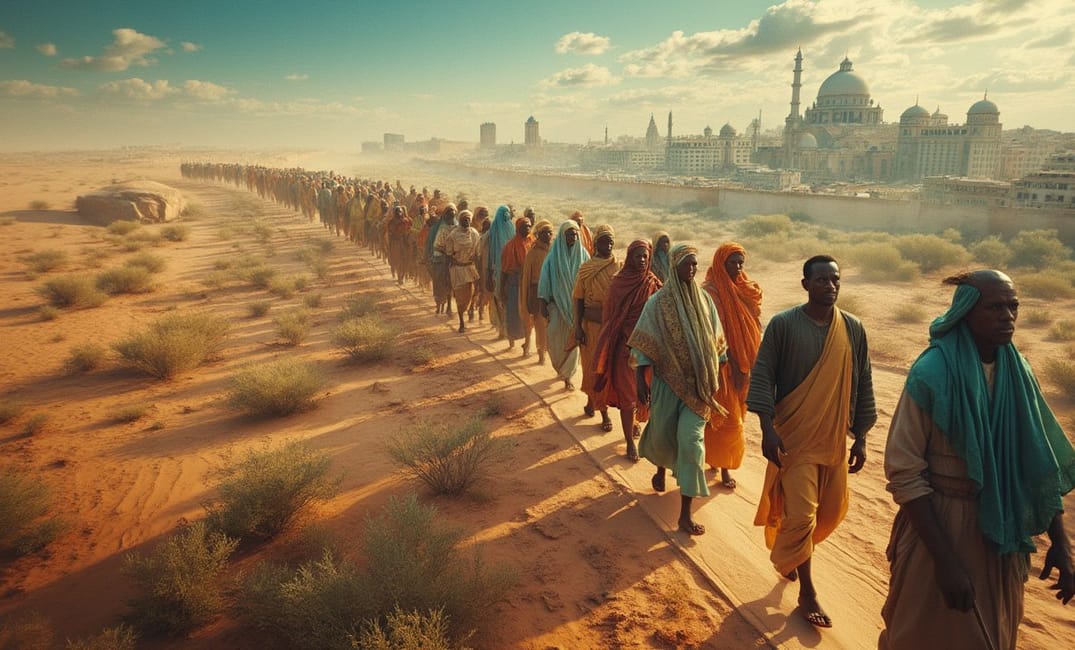Introduction: A Perpetual Journey
Humanity's history is woven from countless journeys across landscapes, extending far back to the earliest migrations out of Africa. Migration has profoundly sculpted our world, influencing biological evolution, cultural exchanges, societal structures, and economic networks. This entry delves into the history and implications of human migration, illustrating how these movements have continuously shaped civilizations and driven global change.
The Dawn of Migration: Humanity's Origin and Dispersion
Out of Africa: Humanity's First Steps
- The Great Dispersal: Anatomically modern humans first emerged in Africa, with evidence suggesting migration out of the continent around 70,000 years ago. These early travelers spread across Europe and Asia, laying the groundwork for human diversity. DNA analysis supports the theory that all non-African populations share ancestry from a small group of these early explorers.
- Ice Age Journeys and Land Bridges: During glacial periods, lower sea levels exposed land bridges, facilitating further migrations. The Bering Land Bridge connected Asia to the Americas, with nomadic hunter-gatherers populating these new continents over thousands of years, evolving distinct cultures and societies.
Evolutionary Impacts of Migration
- Adaptation and Genetic Diversity: Migration led to various adaptation processes—physical traits, such as skin color and body morphology, changed in response to new environments. Genetic mixing due to interbreeding with existing sub-species, like Neanderthals, further enriched human genetic diversity.
- Cultural Divergence and Innovation: As human groups settled in different regions, cultural adaptations flourished, leading to innovations in language, technology, and societal organization. This diversity, born of migration, became a crucial driver in humanity's capacity to adapt and innovate.
Ancient and Classical Migrations: Foundations of Civilizations
The Neolithic Revolution: A Turning Point
- Agricultural Spread and Settlements: The advent of agriculture around 10,000 BCE transformed human societies from nomadic to settled. Migrations spread agricultural practices throughout Europe, Asia, and Africa, leading to settled communities and the rise of complex societies.
- Crops and Domesticated Animals: Cultivation of crops like wheat in the Fertile Crescent and rice in Asia influenced societal structures and dietary patterns across continents, sparking population growth and urbanization.
Eminent Journeys of Antiquity
- Bantu Migration: Over several millennia, Bantu-speaking peoples spread across sub-Saharan Africa, carrying with them skills in agriculture and ironworking. This migration altered the demographic, cultural, and linguistic dynamics of the African continent, leading to the rise of powerful states and rich cultural heritage.
- The Silk Road and Cultural Exchange: Not solely a trade route, the Silk Road facilitated the migration and exchange of ideas, art, religion, and technologies between the East and West. This interconnectedness fostered cultural and economic prosperity during classical and medieval periods.
The Medieval and Early Modern Era: Commerce and Conquest
The Age of Exploration and Colonization
- European Expeditions and the New World: Motivated by curiosity and economic ambitions, Europeans embarked on expansive voyages during the late 15th century. Christopher Columbus's transatlantic voyages heralded the European colonization of the Americas, drastically altering native populations through conquest, disease, and cultural assimilation.
- Transoceanic Trade and Human Movement: The establishment of global trade routes during this period prompted vast movements of goods, people, and cultures. The transatlantic slave trade represents one of the darkest chapters in migration—forced movement that had enduring impacts on African, American, and European societies.
The Formation of Empires and State Borders
- Ottoman To and Fro: The sprawling Ottoman Empire exemplified migration as both a tool and outcome of conquest. Movement within its extensive borders enriched cultural milieus but also imposed challenges in administrative cohesion, necessitating policies to manage diversity.
- Movements Across Continents: Across Asia, Africa, and the Americas, migration triggered by warfare, conquests, and trade shaped empires and regional dynamics, leading to the establishment of vibrant trade cities and cultural melting pots.
Modern Migration: Industrialization, War, and Globalization
The Industrial Era and Urbanization
- Rural Exodus and Urban Growth: The Industrial Revolution in the 19th century precipitated a mass migration from rural communities to urban centers seeking employment. This urbanization fueled economic growth and transformed social structures, although it also led to challenges such as overcrowding and labor exploitation.
- Transatlantic Migration Waves: Between the 19th and early 20th centuries, millions from Europe and Asia migrated to the Americas, attracted by industrial opportunities. This wave of migration created a melting pot of cultures in places like the United States.
Migration During Conflict
- Wars and Refugees: Conflicts like the World Wars, regional disputes, and genocides have forced mass migrations, creating refugee crises that resonate today. Events such as the Partition of India and the displacement linked to the Holocaust are stark reminders of the human cost of such turmoil.
- Exiles and Diasporas: Political instability has often led to significant flows of refugees seeking asylum and safety. The resulting diaspora communities have played critical roles in their host countries, contributing unique cultural and intellectual assets while maintaining ties to their homelands.
The Global Era and Contemporary Movements
- Globalization and Economic Migration: Modern globalization has enabled a fluid exchange of labor and culture across borders. Economic migrants pursue better opportunities, contributing to host nations' economic vitality while often facing challenges related to integration and identity.
- Climate Change and Migration: Environmental changes and natural disasters have emerged as significant migration drivers. Climate refugees from low-lying islands or drought-prone regions exemplify humanity's ongoing struggle with adapting to and mitigating environmental impacts.
The Multifaceted Impacts of Migration
Socio-Economic Influence
- Cultural Exchange and Diversity: Migration enriches societies by fostering cultural diversity, leading to new forms of art, cuisine, language, and societal norms. This multicultural blend can enhance creativity and innovation within communities.
- Economic Contributions and Challenges: Migrants often fill essential roles in labor markets, contributing to economic development. However, integration challenges and socio-economic disparities can exacerbate tensions if not addressed inclusively.
Identity and Belonging
- Dual Identities and Multiculturalism: Migrants navigate complex identities, often blending their heritage with host country cultures to form multifaceted identities. This dynamic endows societies with broader perspectives but necessitates dialogues on inclusion and acceptance.
- Policy and Legal Frameworks: Regulatory frameworks deeply impact migrants' experiences, dictating access to rights and resources. Balancing border control with humanitarian values remains a critical challenge for global societies striving to support humane migrations.
The Future of Human Migration: Opportunities and Challenges
Emerging Trends
- Technological Advances in Mobility: Innovations in transport and communication can facilitate safer and more efficient migratory processes. Technology also plays a crucial role in tracking migratory patterns and aiding humanitarian responses to crises.
- Integration and Social Cohesion: Promoting policies and practices that support integration, language acquisition, and intercultural dialogue is essential to empowering newcomers and fostering cohesive communities.
Ethical Considerations and Global Responsibility
- Human Rights and Migrant Protections: Upholding human rights and ensuring dignity for all migrants requires global cooperation and equitable policies. International agreements aimed at protecting migrants and refugees are critical to addressing vulnerabilities.
- Sustainability and Migration: Future strategies must address sustainable solutions that consider migratory impacts on both origin and destination countries. Balancing needs and resources through collaborative frameworks is vital to a harmonious global future.
Conclusion: The Unending Human Journey
Migration is a fundamental aspect of the human story, shaping civilizations in profound and enduring ways. As humanity continues to navigate modern challenges, understanding migration's history and impacts allows societies to address future migrations with empathy, equitability, and wisdom—a journey echoing the timeless quest for betterment and belonging.
"In every movement, ancient and modern, lies humanity's enduring search for hope and meaning—every journey a testament to resilience, weaving together a global tapestry that connects our shared past, present, and future."
HUMAN MIGRATION, CULTURAL EXCHANGE, HISTORY, GLOBALIZATION, EVOLUTION, CIVILIZATION, SOCIETY

